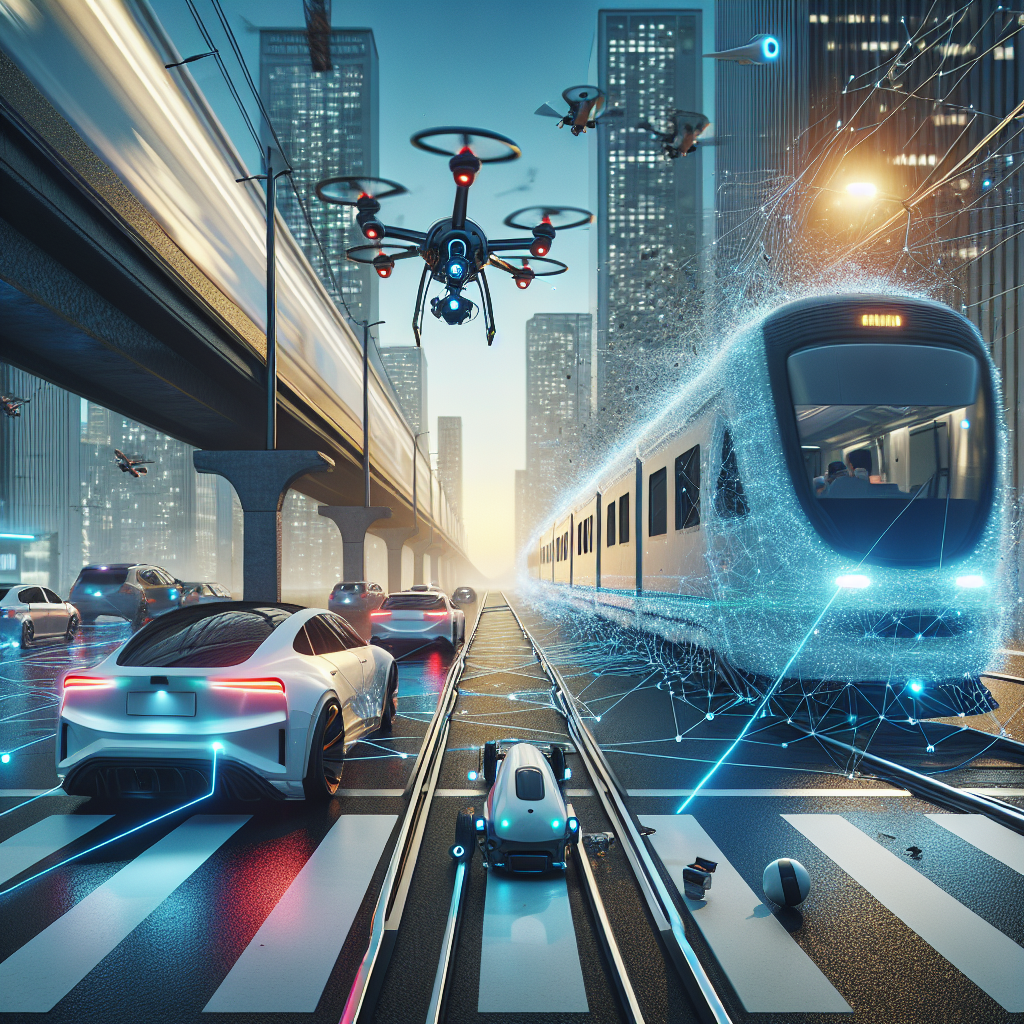Artificial Intelligence (AI) has rapidly become integrated into various industries, including transportation. From self-driving cars to predictive maintenance in airplanes, AI has the potential to revolutionize the way we move from place to place. However, with this advancement comes a host of risks that must be carefully considered and managed to ensure the safety of both passengers and the public at large.
The Risks of AI in Transportation
1. Malfunctioning Technology: One of the biggest risks of AI in transportation is the potential for technology to malfunction. This could result in accidents, injuries, or even fatalities if AI systems fail to properly interpret data or make decisions in real-time. For example, self-driving cars have been involved in accidents due to misinterpretation of traffic signals or unexpected road conditions.
2. Cybersecurity Threats: With the increased use of AI in transportation, there is a greater risk of cybersecurity threats. Hackers could potentially gain access to AI systems and manipulate them to cause accidents or disrupt transportation networks. This could have serious implications for the safety and security of passengers and the general public.
3. Lack of Human Oversight: As AI systems become more advanced, there is a danger that humans may become overly reliant on them and fail to provide adequate oversight. This could lead to complacency and a lack of intervention when AI systems make errors or encounter unexpected situations. Human oversight is crucial to ensure the safe operation of AI in transportation.
4. Ethical Dilemmas: AI systems in transportation must be programmed with ethical considerations in mind. For example, self-driving cars must be able to make decisions in ethically complex situations, such as choosing between the safety of the passengers and the safety of pedestrians. Ethical dilemmas like these can be difficult to navigate and must be carefully considered to ensure the safety of all individuals involved.
5. Job Displacement: The widespread adoption of AI in transportation could lead to job displacement for individuals in the transportation industry. For example, self-driving trucks could potentially replace truck drivers, leading to unemployment for thousands of individuals. This could have significant economic and social implications that must be addressed.
Impacts on Safety
The impacts of AI in transportation on safety are significant and must be carefully considered to ensure the well-being of passengers and the public. While AI has the potential to improve safety by reducing human error and improving decision-making, there are also risks that must be managed to prevent accidents and ensure the safe operation of transportation systems.
1. Improved Decision-Making: AI systems in transportation have the potential to improve decision-making and enhance safety. For example, self-driving cars can analyze vast amounts of data and make split-second decisions to avoid accidents or collisions. This can significantly reduce the risk of human error and improve overall safety on the roads.
2. Predictive Maintenance: AI systems can also be used for predictive maintenance in transportation, helping to identify potential issues before they lead to accidents or breakdowns. By analyzing data from sensors and monitoring the condition of vehicles in real-time, AI can help to prevent mechanical failures and ensure the safe operation of transportation systems.
3. Enhanced Traffic Management: AI can be used to optimize traffic flow and reduce congestion on roads, leading to improved safety for all road users. By analyzing data from traffic cameras and sensors, AI systems can adjust traffic signals and control systems to minimize the risk of accidents and improve overall traffic safety.
4. Emergency Response: AI systems can also be used to improve emergency response times in transportation. For example, AI-powered drones can be deployed to assess road conditions in real-time and provide valuable information to emergency responders. This can help to reduce response times and improve the effectiveness of emergency services in transportation incidents.
5. Training and Education: AI can also be used to improve training and education for transportation professionals, leading to enhanced safety practices and procedures. AI-powered simulations can provide realistic scenarios for training purposes, helping to prepare individuals for real-world situations and improve safety outcomes.
FAQs
Q: What measures are being taken to mitigate the risks of AI in transportation?
A: Various measures are being taken to mitigate the risks of AI in transportation, including robust cybersecurity protocols, human oversight of AI systems, ethical programming of AI algorithms, and training and education for transportation professionals.
Q: How can passengers ensure their safety when using AI-powered transportation systems?
A: Passengers can ensure their safety when using AI-powered transportation systems by following safety guidelines, staying informed about the technology being used, and being prepared to intervene in case of emergencies or malfunctions.
Q: What role do regulators play in ensuring the safety of AI in transportation?
A: Regulators play a crucial role in ensuring the safety of AI in transportation by establishing standards and regulations for the use of AI systems, conducting inspections and audits, and enforcing compliance with safety guidelines.
Q: What are the potential benefits of AI in transportation?
A: The potential benefits of AI in transportation include improved safety, enhanced decision-making, reduced congestion, predictive maintenance, and improved emergency response times.
Q: How can the risks of AI in transportation be effectively managed?
A: The risks of AI in transportation can be effectively managed by implementing robust cybersecurity measures, ensuring human oversight of AI systems, programming ethical algorithms, providing training and education for transportation professionals, and conducting regular inspections and audits of AI systems.
In conclusion, the risks of AI in transportation must be carefully considered and managed to ensure the safety of passengers and the public. While AI has the potential to revolutionize the way we move from place to place, there are significant risks that must be addressed to prevent accidents, injuries, and fatalities. By implementing robust safety measures, ensuring human oversight of AI systems, and programming ethical algorithms, we can harness the power of AI in transportation while minimizing the risks to individuals and communities.

